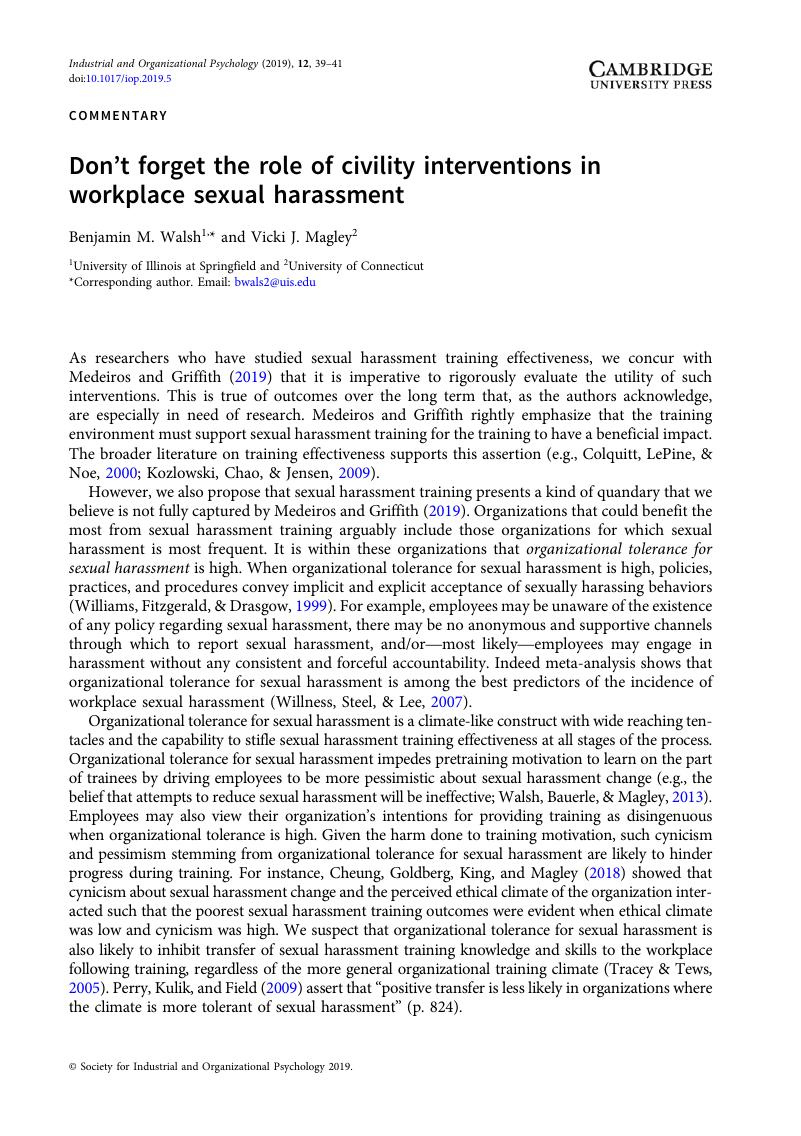Crossref Citations
This article has been cited by the following publications. This list is generated based on data provided by Crossref.
Demsky, Caitlin A.
2019.
Unpacking the role of power in incivility.
Industrial and Organizational Psychology,
Vol. 12,
Issue. 4,
p.
408.
Perry, Sara Jansen
2020.
Changing the narrative on harassment and discrimination training: Building an organizational culture with healthy professional boundaries.
Industrial and Organizational Psychology,
Vol. 13,
Issue. 2,
p.
186.
McClain, T’Shana
Kammer-Kerwick, Matt
Wood, Leila
Temple, Jeff R.
and
Busch-Armendariz, Noël
2021.
Sexual Harassment Among Medical Students: Prevalence, Prediction, and Correlated Outcomes.
Workplace Health & Safety,
Vol. 69,
Issue. 6,
p.
257.
Roehling, Mark V.
Wu, Dongyuan
Choi, Mahl Geum
and
Dulebohn, James H.
2022.
The effects of sexual harassment training on proximal and transfer training outcomes: A meta‐analytic investigation.
Personnel Psychology,
Vol. 75,
Issue. 1,
p.
3.
Kulari, Genta
Laneiro, Tito
Ribeiro, Luísa
Leiter, Michael P.
and
Fernandes dos Santos, Maura Stephanie
2023.
Relationship between authentic leadership and burnout: the mediating role of civility in healthcare sector in Portugal.
Management Research: Journal of the Iberoamerican Academy of Management,
Vol. 21,
Issue. 3,
p.
265.
Adikaram, Arosha S.
and
Kailasapathy, Pavithra
2024.
On whose side are you: perspective-taking and attribution of blame in handling sexual harassment complaints.
Personnel Review,
Vol. 53,
Issue. 2,
p.
526.
Martinson, Brian C.
Smallfield, Jarvis
Magley, Vicki J.
Thrush, Carol R.
and
Gunsalus, C. K.
2025.
Climate of Accountability, Respect, and Ethics Survey (CARES): development and validation of an organizational climate survey.
Frontiers in Research Metrics and Analytics,
Vol. 10,
Issue. ,



